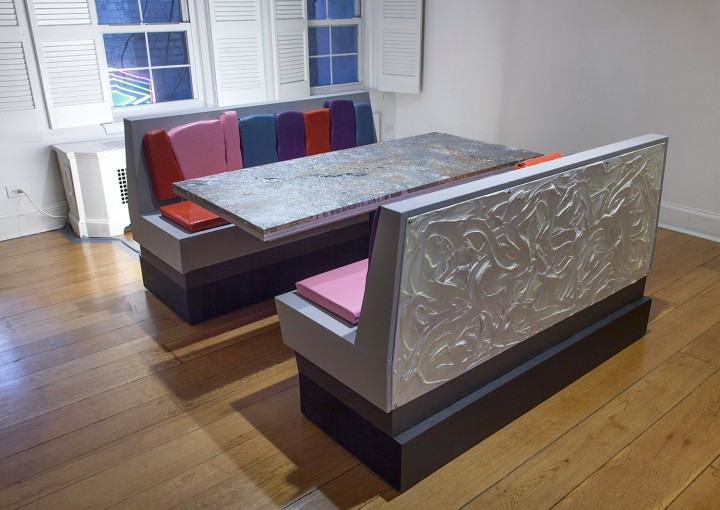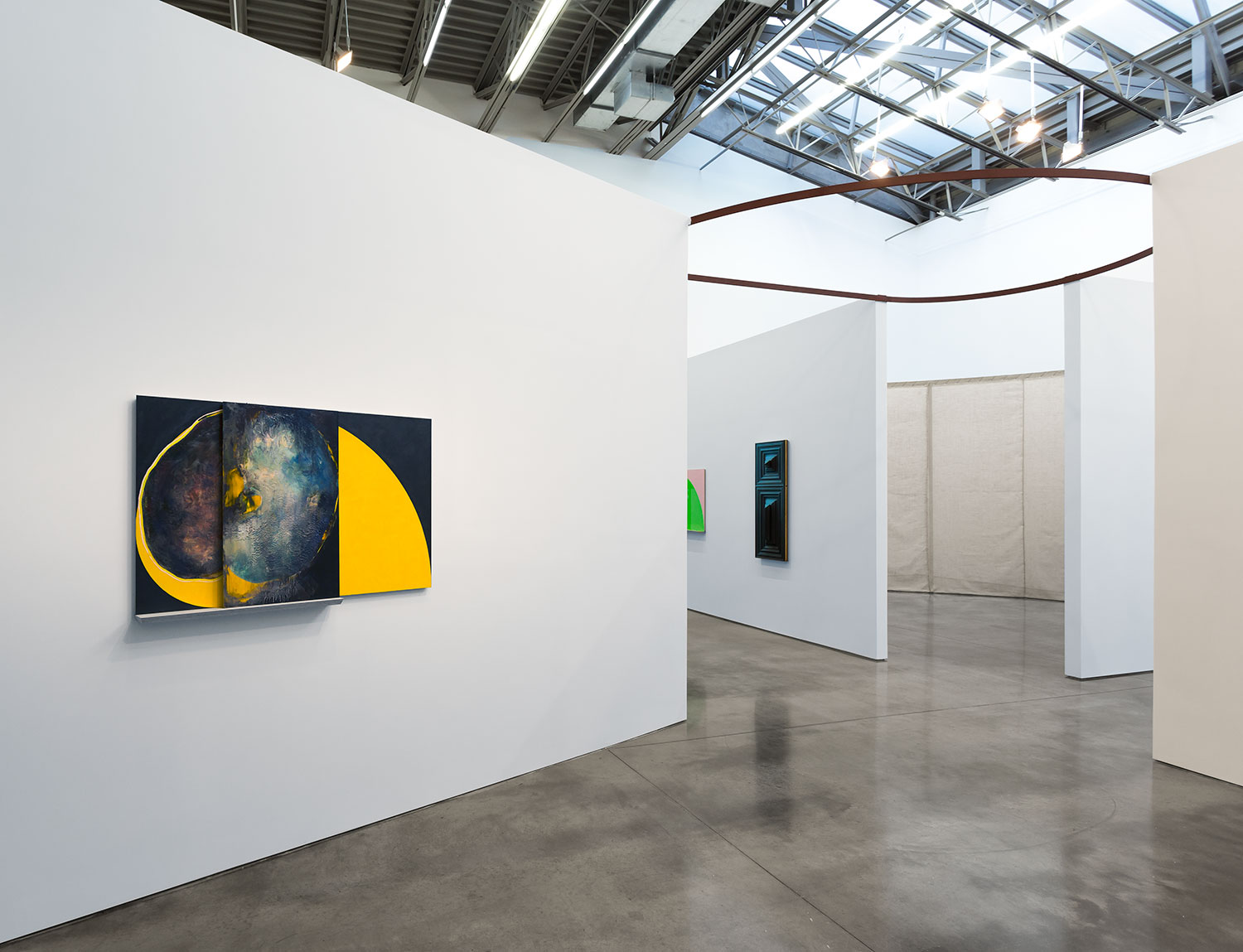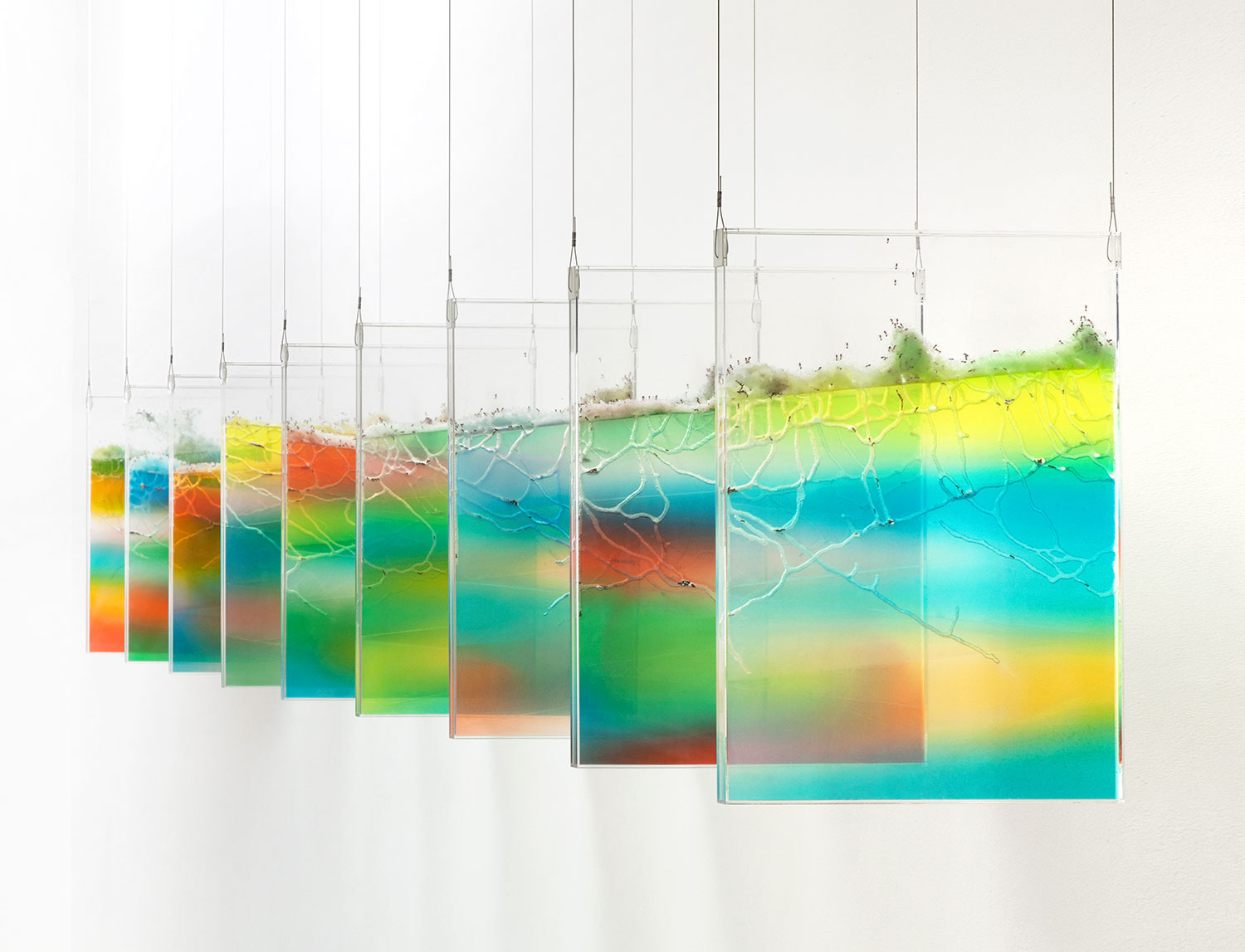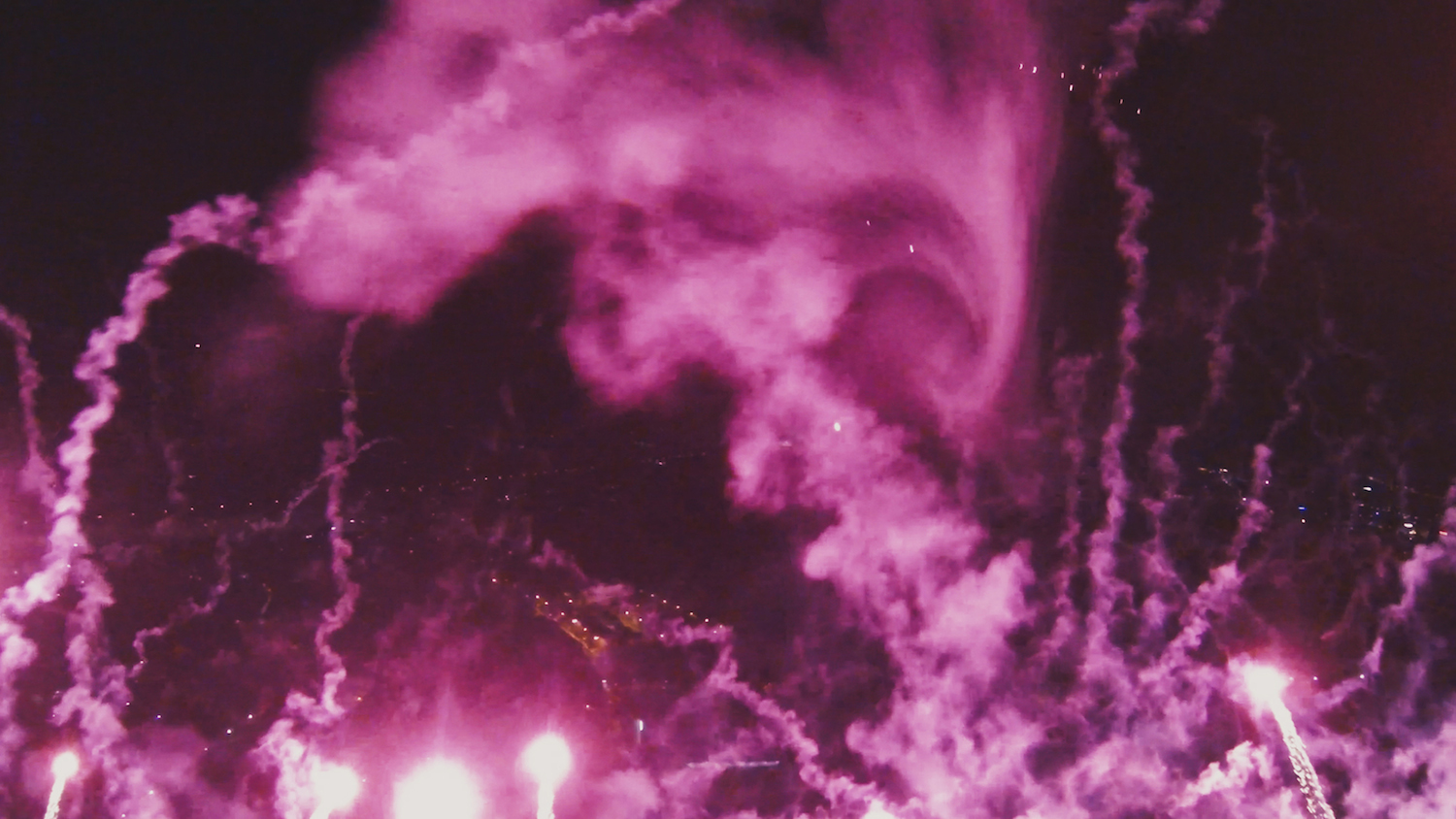The “Rascal House” show is the outcome of a mindblowing experience that happened during the artist’s childhood. It wasn’t a trauma, but an awakening. As a child, when his mother was a museum curator in Boston, Blair Thurman saw the Kienholz’s Beanery (1965). The California artist Ed Kienholz — one half of the mytical Los Angeles-based Ferus gallery — had re-created the legendary LA diner with smell of beer and turning faces behind clocks. This surrealistic and carnavalesque installation made a great impact on little Thurman. A few decades later, the memory still vivid in his mind, the latter decided to go investigate the real place. By then, he had learned the cultural aura of Barney’s Beanery: a popular diner in the 60’s among the Ferus Gallery artists, and the Americana art scene.
His experience of the real place didn’t end the trip, but rather started another. Like an answer calling another question, his visit inspired him another piece of art, his own version of Barney’s Beanery, namely “Rascal House.”
Thurman proposed his friends and heroes to collaborate on this show, in an attempt to recreate with them the California dinner place. The main piece is a booth, as a form of cadavre exquis: John Armleder painted the tabletop, Stephane Kropf made one booth backing with a material he calls “interference painting,” whereas Thurman made the other booth backing using his recent neon artworks. Justin Adian produced the cushions. The booth is paired with an Ed Ruscha drawing from 1963. On the other gallery’s stories are displayed a couple of Kropf’s interference paintings with a few Thurman’s neon grids.
Pop, geometric, ad-free neon lights, a colorful, dense, volcanic booth, and paintings we could stick a straw into and drink like smoothie, “Rascal House” recapitulates the essence of a the 80’s LA diner. But which one exactly? The one Thurman visited as a child, the one he visited years later in LA, or a fictitious one he had in mind? What if they were all the same: they may just only refer to a special moment in time where four friends decide to sit together and share food, stories, and culture. A moment Thurman might have missed, so he fell the need to shape his nostalgia.
From a more global standpoint, Thurman’s sculptures seem always to activate the space to engage, or refer to human interactions (see his recent show at Gagosian.) One well of inspiration for Americana art might be the diner booth itself: a second home, next to the road, facing possibilities of expansion, exploration, encapsulated in a wooden ship that stays still, with comrades within to decide what path their imagination could venture next. With the diner booth’s inherent communal and physical implications, Thurman and friends stage the Americana ritual with refreshing limelights.




